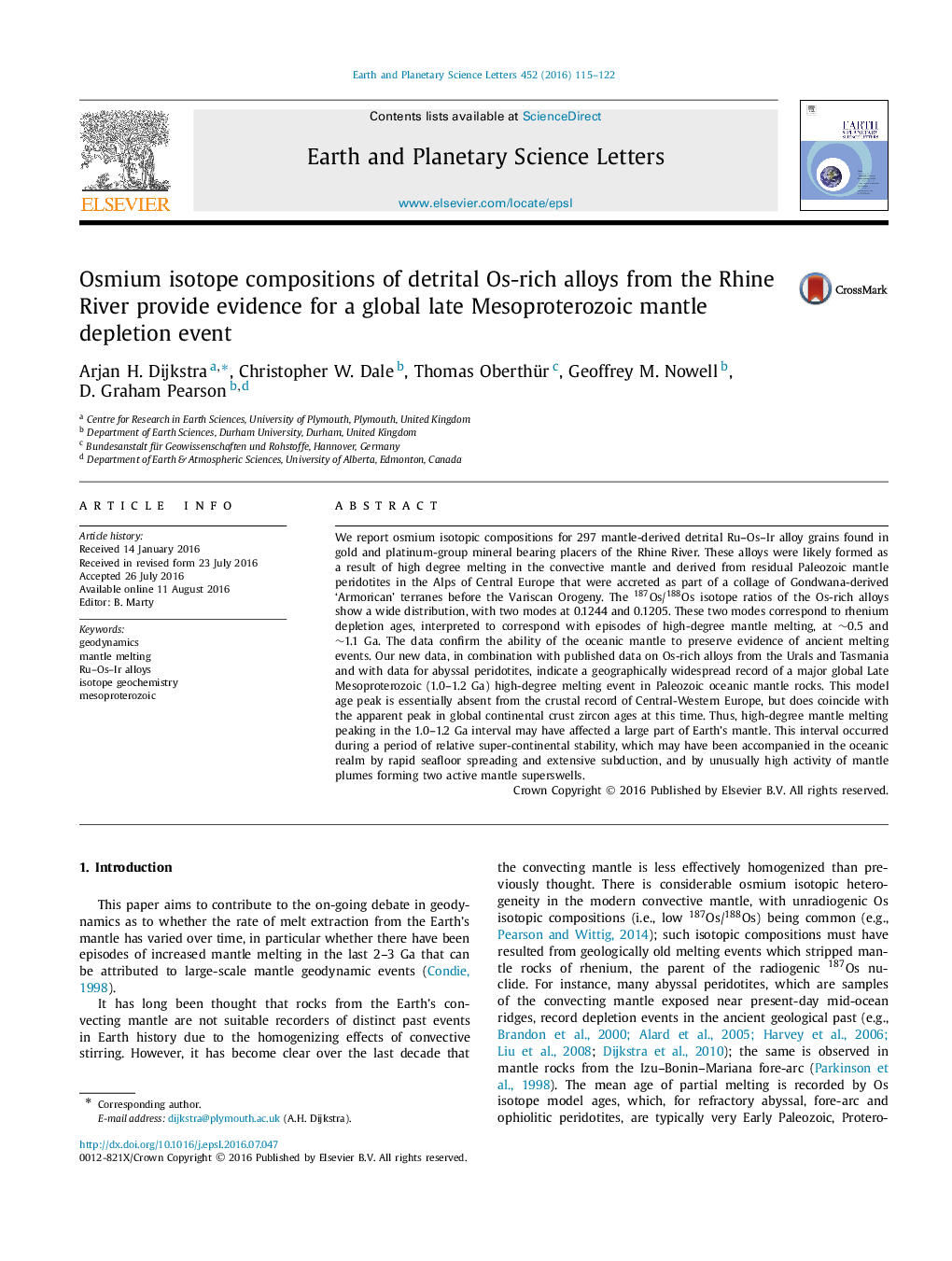| کد مقاله | کد نشریه | سال انتشار | مقاله انگلیسی | نسخه تمام متن |
|---|---|---|---|---|
| 6427101 | 1634704 | 2016 | 8 صفحه PDF | دانلود رایگان |
- We report osmium isotope compositions of 297 mantle-derived Ru-Os-Ir alloys from the River Rhine.
- The alloys record two mantle melting events: one at â¼500 Ma and one at 1.0-1.2 Ga.
- The local geology cannot explain Late Mesoproterozoic mantle melting.
- The late Mesoproterozoic peak coincides with a global peak in zircon crystallization.
- Global mantle melting in the late Mesoproterozoic is linked to supercontinent cycle.
We report osmium isotopic compositions for 297 mantle-derived detrital Ru-Os-Ir alloy grains found in gold and platinum-group mineral bearing placers of the Rhine River. These alloys were likely formed as a result of high degree melting in the convective mantle and derived from residual Paleozoic mantle peridotites in the Alps of Central Europe that were accreted as part of a collage of Gondwana-derived 'Armorican' terranes before the Variscan Orogeny. The 187Os/188Os isotope ratios of the Os-rich alloys show a wide distribution, with two modes at 0.1244 and 0.1205. These two modes correspond to rhenium depletion ages, interpreted to correspond with episodes of high-degree mantle melting, at â¼0.5 and â¼1.1 Ga. The data confirm the ability of the oceanic mantle to preserve evidence of ancient melting events. Our new data, in combination with published data on Os-rich alloys from the Urals and Tasmania and with data for abyssal peridotites, indicate a geographically widespread record of a major global Late Mesoproterozoic (1.0-1.2 Ga) high-degree melting event in Paleozoic oceanic mantle rocks. This model age peak is essentially absent from the crustal record of Central-Western Europe, but does coincide with the apparent peak in global continental crust zircon ages at this time. Thus, high-degree mantle melting peaking in the 1.0-1.2 Ga interval may have affected a large part of Earth's mantle. This interval occurred during a period of relative super-continental stability, which may have been accompanied in the oceanic realm by rapid seafloor spreading and extensive subduction, and by unusually high activity of mantle plumes forming two active mantle superswells.
Journal: Earth and Planetary Science Letters - Volume 452, 15 October 2016, Pages 115-122
